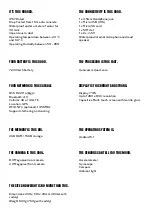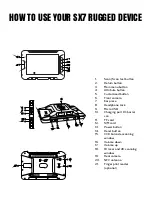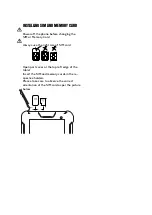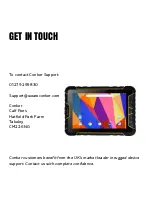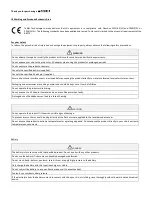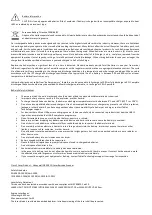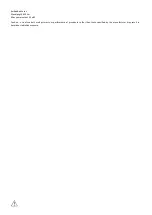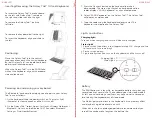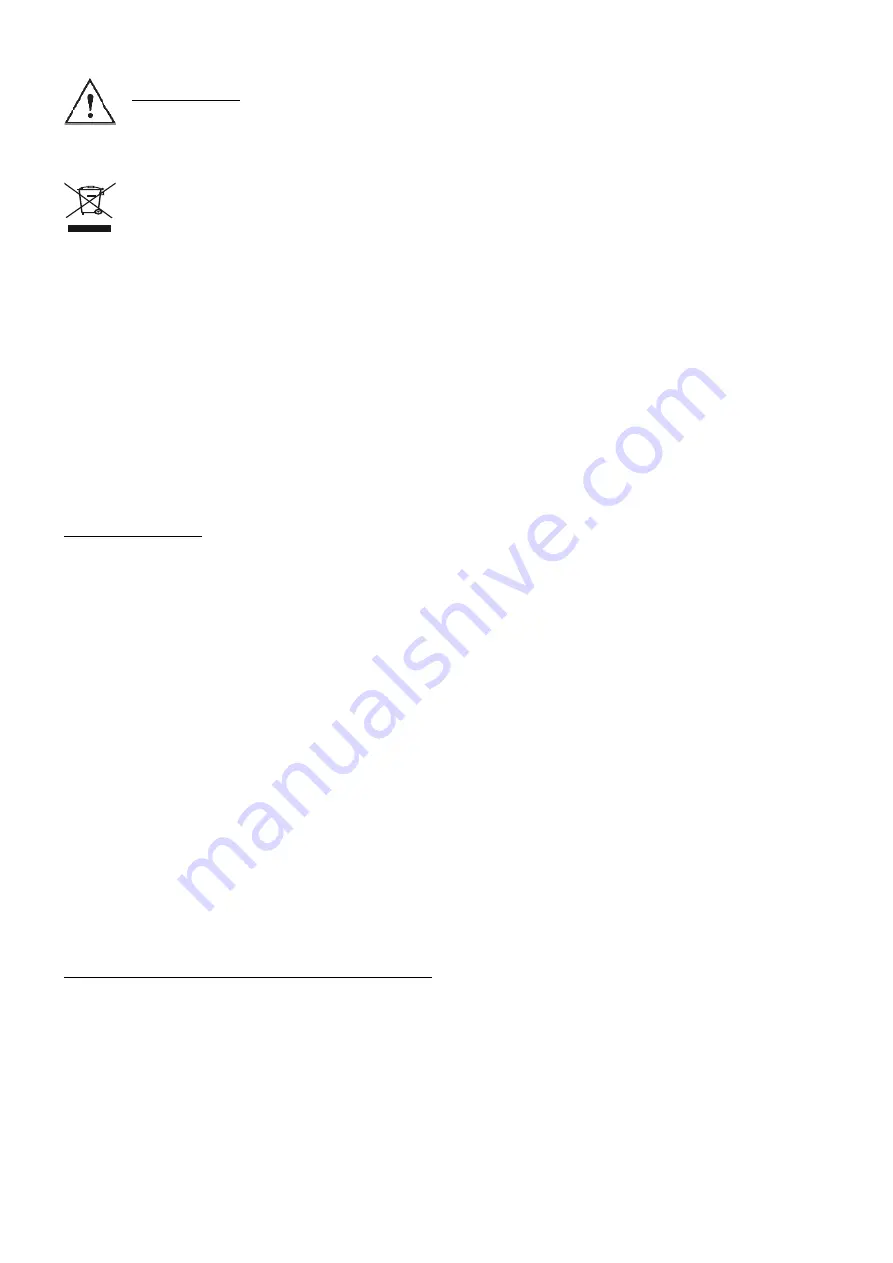
Ba
�
ery Informa
�
on
CAUTION. Use only approved ba
�
eries. Risk of explosion if ba
�
ery is charged with an incompa
�
ble charger, exposed to heat
>60C or replaced by an incorrect type.
European Ba
�
ery Direc
�
ve 2006/66/EC
Dispose of ba
�
eries separately and responsibly. All waste ba
�
eries are classi
fie
d as hazardous waste and should be disposed of
at a ba
�
ery recycling centre.
Our rechargeable ba
�
ery packs are designed and constructed to the highest standards within the industry. However, there are limita
�o
ns
to how long a ba
�
ery can operate or be stored before needing replacement. Many factors a
ff
ect the actual life cycle of a ba
�
ery pack, such
as heat, cold, harsh environmental condi
�o
ns and severe drops. Ba
�
eries are considered chemical products. As such, ba
�
ery performance
will deteriorate over
�
me if stored for a long period of
�
me without being used. When ba
�
eries are stored over six (6) months, some
irreversible deteriora
�o
n in overall ba
�
ery quality may occur. Store ba
�
eries at half of full charge in a dry, cool place, removed from the
equipment to prevent loss of capacity, rus
�
ng of metallic parts and electrolyte leakage. When storing ba
�
eries for one year or longer, the
charge level should be veri
fi
ed at least once a year and charged to half of full charge.
Replace the ba
�
ery when a signi
fi
cant loss of run
�
me is detected. Standard warranty period for all ba
�
eries is one year from order
ful
fi
lment, regardless if included as part of a mobile computer with a longer warranty dura
�o
n or ongoing maintenance contract. The cycle
life of ba
�
eries will vary according to the charge and discharge condi
�o
ns, the temperature and other usage condi
�o
ns. When used in
accordance with the IEC charge and discharge speci
fi
ca
�o
ns the typical cycle life of a ba
�
ery is between 300 and 400 cycles at room
temperature. Individual results may vary.
Lithium ba
�
eries do not su
ff
er from “ba
�
ery memory” therefore you do not need to fully charge to 100% or fully discharge to 0%. Complete
discharge of ba
�
eries should always be avoided. Shallow discharge is preferable, i.e. recharge at 20% if possible.
Ba
�
ery Safety Guidelines
The area in which the units are charged should be clear of debris and combus
�
ble materials or chemicals.
Improper ba
�
ery use may result in a
fire
, explosion, or other hazard.
To charge the mobile device ba
�
ery, the ba
�
ery and charger temperatures must be between 0°C and +40°C (+32°F to +104°F).
Do not use incompa
�
ble ba
�
eries and chargers. Use of an incompa
�
ble ba
�
ery or charger may present a risk of
fire
, explosion,
leakage, or other hazard. If you have any ques
�o
ns about the compa
�
bility of a ba
�
ery or a charger, contact Tablet
Technologies support.
For devices that u
�l
ize a USB port as a charging source, the device shall only be connected to products that bear the USB-IF
logo or have completed the USB-IF compliance programme.
Do not disassemble or open, crush, bend or deform, puncture, or shred.
Severe impact from dropping any ba
�
ery-operated device on a hard surface could cause the ba
�
ery to overheat.
Do not short circuit a ba
�
ery or allow metallic or conduc
�
ve objects to contact the ba
�
ery terminals.
Do not modify or remanufacture, a
�
empt to insert foreign objects into the ba
�
ery, immerse or expose to water or other
liquids, or expose to
fire
, explosion, or other hazard.
Do not leave or store the equipment in or near areas that might get very hot, such as in a parked vehicle or near a radiator or
other heat source.
Do not place ba
�
ery into a microwave oven or dryer.
Ba
�
ery usage by children should be supervised.
Please follow local regula
�o
ns to promptly dispose of used re-chargeable ba
�
eries.
Do not dispose of ba
�
eries in
fire
.
Seek medical advice immediately if a ba
�
ery has been swallowed.
In the event of a ba
�
ery leak, do not allow the liquid to come in contact with the skin or eyes. If contact has been made, wash
the a
ff
ected area with large amounts of water and seek medical advice immediately.
If you suspect damage to your equipment or ba
�
ery, contact Tablet Technologies support to arrange for inspec
�o
n.
Class 2 Laser Product – Honeywell N4300 1D Laser Barcode Scanner
Safety Standards:
EN 60950-1:2005/Am1:2009,
IEC 60950-1:2006/A11:2009/A1:2010/A12:2011
Laser Safety Statement
This device has been tested in accordance with and complies with IEC 60825-1 ed2.0.
LASER LIGHT, DO NOT STARE INTO BEAM, CLASS 2 LASER PRODUCT,1.0 mW MAX OUTPUT: 650nm.
Engine Laser Beam:
Wavelength 650 nm
Max power output 1mW
The laser diode is considered an embedded laser. Intrabeam viewing of the laser shall be prevented.


